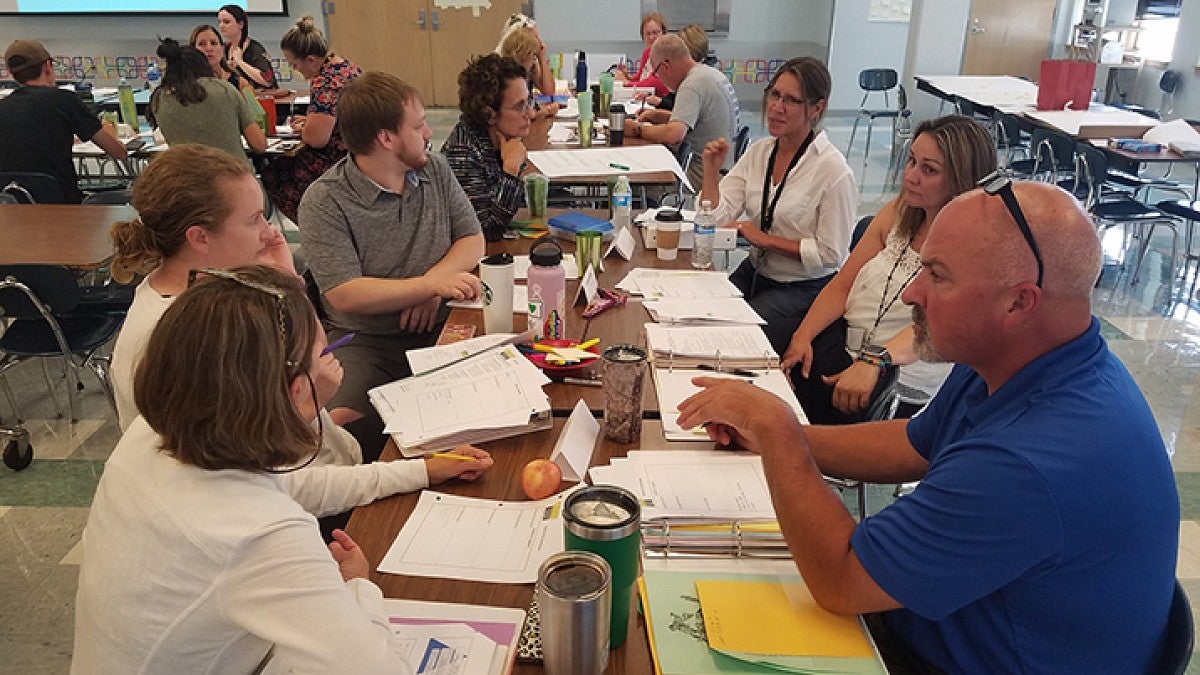The Pendleton-based InterMountain Education Service District, which serves 23,000 students in 18 rural Oregon school districts, has become a laboratory of sorts to better support an often-underutilized, undertrained and overlooked classroom partner.
Educational assistants, also called paraeducators or instructional assistants, provide a range of supports for classrooms and schools. They monitor classrooms, lunch or recess for students who need specialized or concentrated attention. They can also assist an individual or groups of students with special needs reach their academic or behavioral goals or lend a hand with classroom management.
But their professional development training has tended to be haphazard or lumped into teacher training sessions, especially for those who work with students in special education classrooms in the less-populated areas of the state.
But now these specialized assistants are getting special attention. The Oregon Research Schools Network, part of the University of Oregon College of Education, is working with InterMountain ESD to develop a progressive, online training system to empower paraeducators to become better advocates for themselves and for the students they’re supporting. Educational assistants are particularly relevant in an era when both educators and students are struggling with the mental health impacts of COVID-19.
“One of the very loud feedback pieces that we heard on a regular basis is the districts feel ill-equipped to support their paraeducators,” said Erin Lair, director of teaching and learning for InterMountain ESD, which serves school districts in Morrow, Umatilla, Union and Baker counties. “There really wasn’t anything that was concrete or planned or put together. There weren’t systems in place to support that.”
Around the same time that the ESD was raising its awareness about needed supports for educational assistants, the UO’s Chris Knowles, a research associate in the Center on Human Development, was gathering information to design a framework to innovate paraeducator training. Knowles formerly worked as a paraprofessional and special education teacher and has expertise in working with students with emotional and behavioral disorders, autism and cognitive limitations. Recent half-day focus group sessions with special education teams of teachers and paraeducators provided what she called “a real ‘aha!’ moment.”
“What actually started coming out was more of systemic challenges, such as lack of time for communication and collaboration with teachers, and opportunities to learn and practice new skills,” Knowles said.
Because the school network’s objective is to pair UO experts with educators in the field who need support with education challenges, Nancy Golden, the network’s director and the UO’s first professor of practice, invited Knowles into the project with InterMountain ESD.
“It was really right place, right time, right person,” Knowles said. “That was really exciting. We replicated some of those sessions with Intermountain ESD and some of the similar information was kind of rising to the top. That was like, whoa, this was a thing.”
So far, at least 200 educational assistants within the InterMountain ESD service area have logged into the network system to access the 12 modules, which each take 10-15 minutes. Topics so far include remote use of educational assistants, trauma-informed education, positive behavioral supports and instructional support strategies.
“They feel empowered by this training,” Lair said. “It’s like giving them a voice where they didn’t have a voice.”
Together, the school network team, which includes Lair; Knowles; Golden; Heidi Paullus, InterMountain ESD’s instructional coach; and Sol Joye, the network’s associate director, meets weekly to continue to build the comprehensive training system. By the end of the school year, the network intends to have at least 20-25 micro-professional-development training modules representing the first phase of the system.
Next, Knowles, in collaboration with the network, will focus on refining and implementing phase 2, which will be grounded in ongoing feedback and input from educational assistants. That next phase will consist of designing a system to promote generalization of the skills into the practice that was introduced in the online training platform.
The network is also hoping to eventually expand its micro-professional-development outreach to new school, district and ESD partners around the state.
“Just getting the knowledge out to our paraeducators, they are so extremely grateful,” Paullus said. “It’s been a huge need out here. We’re just so spread out and just different-sized districts. Just the format alone is what we need. They can get information when they need it.”
—By S. Renee Mitchell, College of Education


